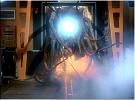mdiehl
Posts: 5998
Joined: 10/21/2000
Status: offline

|
quote:
Wow, its obvious you have never served as aircrew anywhere. You have no understanding of the variables that account for aircrew performance. Fatigue is insidious.
Wow. You obviously have no understanding of the records of movement or deployment of either the IJN or the USN in the 1941-1942 time frame. There is no basis for claiming that the main Strike Force pilots had been in more continuos action than those on the USN's big 4 after January 1942. Pilot fatigue is not an adequate or rational explanation (under the circumstances) for the outcomes of the CV engagements.
quote:
Having that longer range can also be a serious disadvantage, especially when damaged.
OK. I think we're talking past each other here. I said specifically the CV vs CV engagements. In these engagements, both sides operated from identical ranges, typically less than 210 miles. I'm specifically NOT talking about 11th Air Fleet at Rabaul attacking the aircraft and positions at Lunga.
In the CARRIER combats, the F4Fs shot down about 10%-20% more Zekes than they lost in F4Fs. In the CARRIER combats, they occurred at ranges that (in the case of Midway) worked against the F4Fs.
Therfore, since the F4Fs acquitted themselves better against the Zero than vice versa, despite adverse conditions working against the F4Fs, it is clear that the F4F victories anywhere can't just be attributed to "handicaps against the Japanese." See? When the USN VF F4F pilots had to accommodate the same handicaps, they still beat the Japanese A6Ms.
Returning to the Lunga 11th Air Fleet battles. Yes, the Japanese pilots had to deal with longer flights and thus fatigue. One very clear advantage that they HAD, however, was that once clear of the combat area they were out of threat. On returning to Rabaul they had hot water showers, plenty of food, clean (if spartan) accommodations, and no fears of attack. In contrast, US pilots stationed at Henderson had inadequate food, poor accommodations, were subject to harassing artillery fire during the day, naval bombardment at night, the sounds of pitched battles fought initially less than 1 km from their position, and at times Japanese infiltrators.
Is it your contention that the US pilots and Henderson field were not also suffering from substantial fatigue? If so, that is a fairly unusual claim, IMO.
_____________________________
Show me a fellow who rejects statistical analysis a priori and I'll show you a fellow who has no knowledge of statistics.
Didn't we have this conversation already?
|
 Printable Version
Printable Version














 New Messages
New Messages No New Messages
No New Messages Hot Topic w/ New Messages
Hot Topic w/ New Messages Hot Topic w/o New Messages
Hot Topic w/o New Messages Locked w/ New Messages
Locked w/ New Messages Locked w/o New Messages
Locked w/o New Messages Post New Thread
Post New Thread